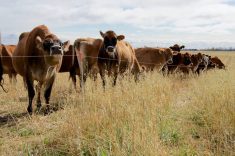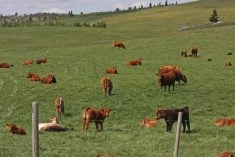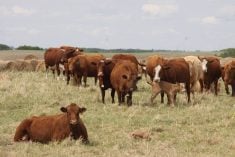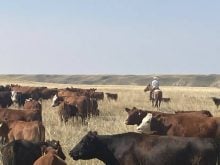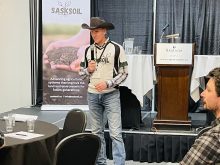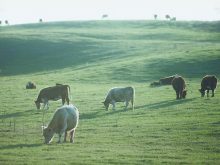Forage inventory needed Ranchers say they play second fiddle to forest industry, pasture forage needs often overlooked by government
VERNON, B.C. — The competition for resources is a common theme on the diverse landscape of British Columbia.
Ninety-four percent of the province is crown owned land, and ranchers depend on one-third of that for grazing. These days, they compete against wildlife as well as recreation, mining, forestry and urbanization.
Ranchers sometimes feel they are playing second fiddle to the forest industry and that their need for forage is overlooked.
Werner Stump, president of the North Okanagan Livestock Association, said the government has focused on managing forests and maintaining good inventories of what is available at the expense of other users such as agriculture.
Read Also

Tick research from the University of Manitoba focuses on insects and testing
Manitoba researchers are looking into the effects of tick and fly disease in cattle.
“We got really good at growing trees. We got them established quickly and they were established densely so it reduced the opportunity for forage,” he said during a forage presentation at the B.C. Cattlemen’s Association annual meeting in Vernon May 23-25.
Stump’s association is working on pilot projects with foresters to rebuild ranges and ensure there is enough water in a balanced ecosystem.
B.C. forest management was originally focused on fire control, but it eventually evolved into managing timber harvest. Today, the timber sector is tightly controlled and stable, but there is no planning for the amount or quality of forage growing under and around the trees or in open areas that have been cut.
Ranchers passed a motion calling for a detailed inventory of the provincial forage supply.
“Until we get a database, we won’t be able to manage forage on a sustainable basis,” Stump said.
Ranchers also passed a resolution to create a stumpage appraisal cost allowance for all measures required for forage establishment, including site preparation and grass seeding.
David Borth, range manager with the ministry of forests, lands and natural resources operations, said no inventory has been taken for 20 years, and that was probably not as comprehensive as it should have been.
“If we had the resources, we could probably implement it,” he said in an interview.
“We don’t really have a forage inventory for the province. I don’t know if you could say we ever had a comprehensive forage inventory. It is not comparable to what there is for timber.”
The inventory would also need to categorize the plant species, their productivity and the types of range.
Inspectors rely on historic use data when assessing range to determine animal unit months.
“A lot of our decision making is based on what happened last year rather than a more objective, scientific assessment of what’s there,” Borth said.
The inventory would also need to assess if there are adequate resources to share with fish and wildlife.
Another problem has occurred since the mountain pine beetle carried a fungus that killed millions of trees in the central regions. It was thought that plenty of grazing areas would open up as the dead stands were removed. That has not occurred because the task was so large that many of the affected areas have been left alone to let nature take its course.






